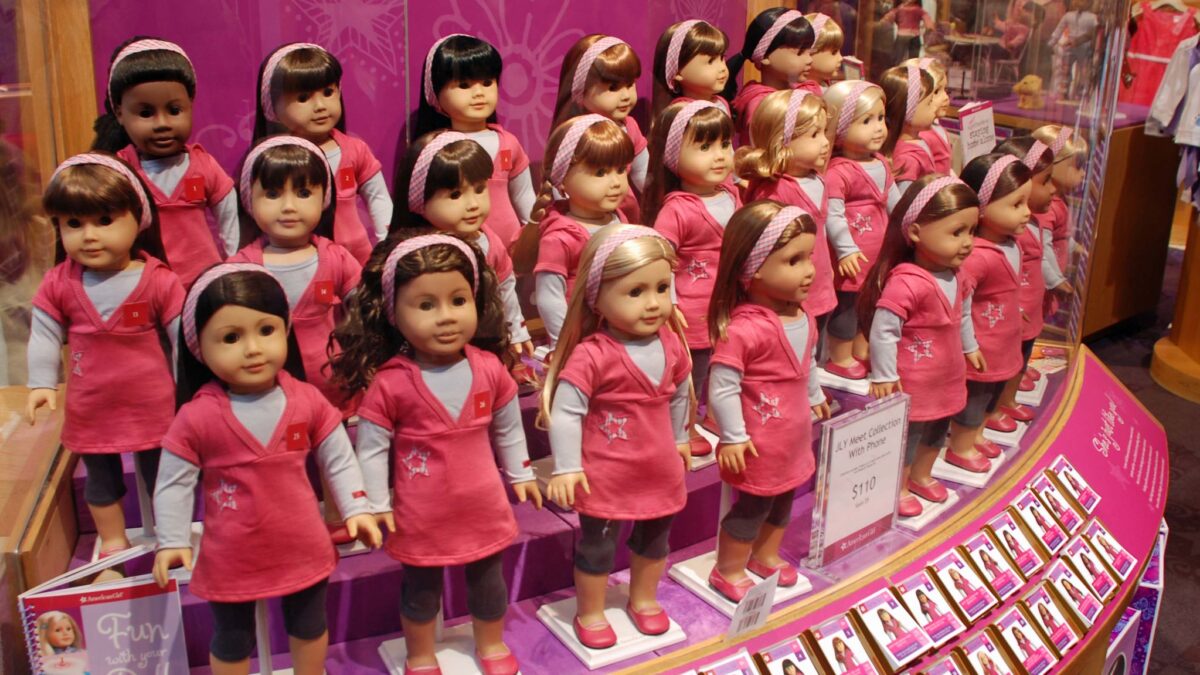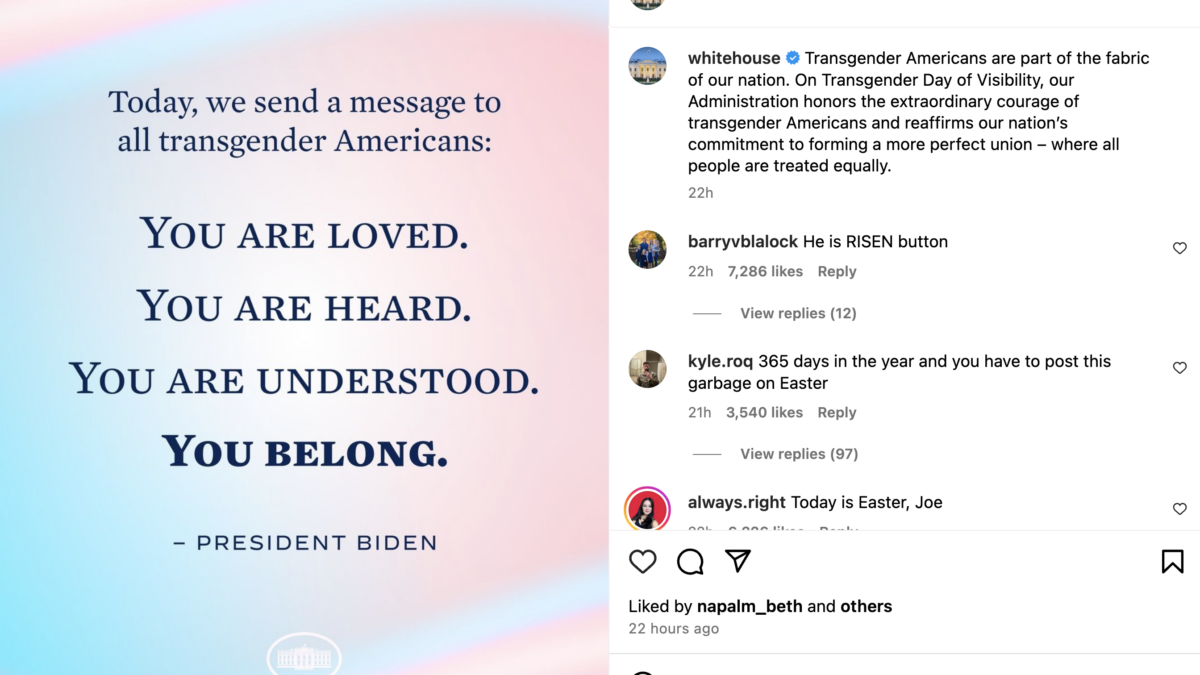The popular doll company, American Girl, recently released a new book “A Smart Girl’s Guide: Body Image,” containing controversial advice promoting puberty blockers to prepubescent girls. Rather than teaching its target audience of girls older than 10 to accept the natural progression of female puberty, the text states, “You can appreciate your body and everything it allows you to experience and still want to change certain things about it.”
Outraged parents claim the book’s description of hormone suppressants as “medicine” doctors can prescribe to provide uncomfortable tweens “…more time to think about their gender identity” falsely characterizes the irreversible treatment as temporary, failing to convey the permanence of such choices to those who lack a comprehensive understanding of puberty itself.
The legal demarcation between childhood and adulthood exists because there is a societal consensus that children are not developmentally equipped to make life-altering decisions. However, there has been increasing initiative in the United States to transfer the authority to make significant medical decisions to minors. This is exemplified on page 95 of the book, which provides resources for young girls to subvert the control of their parents to pursue transgender medical interventions.
Author Mel Hammond’s 96-page illustrated handbook is latest addition to American Girl’s long-running “Smart Girls Guide” series that emerged in the early 2000s. The series focused on topics exclusive to girlhood, such as friendship troubles, starting middle school, and knowing what to say. “The Care and Keeping of You” was the original American Girl puberty book, objectively explaining these physical changes through a lens of female empowerment. The illustrated cover of three young girls in towels is etched into the minds of millennial women, who relied on this guidebook to navigate the awkward stages of metamorphosis.
Over time, many books in the “Smart Girls Guide” series were republished to reflect changes in American culture. “A Smart Girl’s Guide to the Internet” (2009) was retitled to “A Smart Girl’s Guide: Digital World” (2017). “A Smart Girl’s Guide to Boys“ (2001) was revamped as “A Smart Girl’s Guide to Crushes“ (2020) to include homosexual relationships. “A Smart Girl’s Guide: Body Image“ (2022) replaced “The Care and Keeping of You” (1998). Gender-bending was not presented as an option in the 1998 puberty guide.
Dolls of American History
American Girl established itself as a brand based on a premise identifiable by its nomenclature. Founded by Pleasant Rowland in 1986, the company started out selling 18-inch dolls reflective of critical periods in American history. Each doll came dressed in clothing reflective of their designated era, accompanied by a book telling the story of the character’s experience as a young girl growing up during historical circumstances.
American Girl’s original stories focused on the personal struggles of young girls in history, but this literature did not attempt to equate these struggles to the triumphs of notable historical figures. These books were educational tools that humanized people of the past and broadened the reader’s perspective. Young girls could visualize historical eras because they could easily relate to situations and traits exhibited by characters that represented their demographic. Possessing a tangible doll of the character further cemented this newfound connection with history.
In 1998, Mattel purchased Pleasant Company. American Girl introduced two new lines of contemporary dolls: “Girl of the Year” and “American Girl of Today,” now called “Truly Me.” The “Girl of the Year” doll is an exclusive character with a story and a collection of purchasable outfits and accessories; this format is similar to the “Historical Characters” line. “Truly Me” dolls are nameless and numbered, allowing customers to select a model most representative of their likeness.
As the company expanded, embracing American girlhood remained a key tenet of the brand to the point of gimmick. Outfits marketed for contemporary dolls went from realistically androgynous to aggressively feminine, overusing design elements associated with girls like bold patterns, the color pink, and excessive frills and bows. Eventually, the “Historical Characters” line was no longer at the forefront of American Girl’s marketing. As an economic institution, this is likely because consumer demand was preferential to contemporary characters, who were automatically more relatable. A girl’s relationship with her doll was no longer based on experience; it was based on appearance.
Anti-American Girl?
Gradually, American Girl began to abandon the “American” of its nomenclature. In 2014, the “Historical Characters” line was rebranded as “BeForever.” Historically accurate meet outfits were replaced by loosely canonical clothing, vibrantly colored to appeal to the target audience. The “Girl of the Year” line began to release dolls traveling abroad like Grace Thomas in 2015 (Paris), Lea Clark in 2016 (Brazil), and Kira Bailey in 2021 (Australia).
Arguments against this marketing shift emphasize the political nature of such changes as attitudes toward America shift toward self-loathing. Why would consumers purchase potential 1776 slave-owning Felicity Merriman when they could opt for a more palatable, worldly character? Suddenly selling an Addy Walker doll, whose backstory involves slavery, seemed problematic.
American Girl has responded to modern politics for years. At the height of the anti-bullying campaign, 2009 “Girl of the Year” character Chrissa Maxwell was a victim of bullying, and her story detailed how she overcame this adversity. In 2017, American Girl released Gabriela McBride, the first black “Girl of the Year” character; however, this was met with disapproval. In the same year, a blonde, white Tenney Grant was released as a country-singing contemporary character. Fans discovered that Tenney Grant was supposed to be the 2017 “Girl of the Year,” and American Girl recycled a black “Truly Me” doll for Gabriela, haphazardly piecing together a cliche dance-themed collection.
Tenney Grant was released with Logan Everett, American Girl’s first boy doll. American Girl released more boy dolls through the “Truly Me” line due to customer demand. Other customers were concerned that the company was also abandoning the “Girl” part of their nomenclature. They perceived the boy doll to challenge the notion of gendered toys in an attempt to be more inclusive. American Girl’s product line followed in lockstep with leftist American attitudes.
Similar political statements include “Girl of the Year” Kira Bailey’s lesbian aunts, “Truly Me’s” colored-haired dolls, and the introduction of the “World By Us“ line which features three contemporary characters, each accompanied by social justice narratives: biracial Evette Peeters’ climate change activism, Hispanic Maritza Ochoa’s feminist soccer experience, and black Makena William’s anti-racist fashion. In 2022, “Girl of the Year” Corrine Tan made headlines due to the relevance of the “Stop Asian Hate” movement. In her book, a boy at a skating rink tells the Chinese character that she has the “Kung flu,” a phrase politicizing the doll as an oppositional response to President Trump’s infamous Covid-19 comments.
American Girl’s evolution demonstrates a cultural shift toward decadence. As virtuous customers reject traditional American values and celebrations of biological girlhood, the company adapts to remain profitable. Concerned parents allege that propagandists strive to ideologically corrupt the malleable minds of young girls to feed other economic institutions, such as those selling puberty blockers and funding Democrat politicians. Veteran American Girl fans are disheartened that a cherished source of childhood nostalgia has become unrecognizable.









